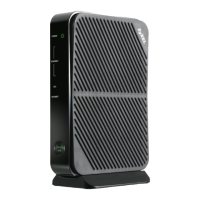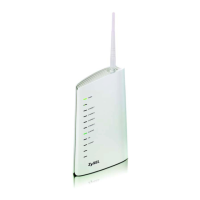Chapter 23 Tools
P-79X Series User’s Guide
224
where “i” specifies binary image transfer mode (use this mode when transferring binary files),
“host” is the P-79X IP address, “get” transfers the file source on the P-79X (rom-0, name of the
configuration file on the P-79X) to the file destination on the computer and renames it config.rom.
Configuration Backup Using GUI-based TFTP Clients
The following table describes some of the fields that you may see in GUI-based TFTP clients.
Refer to Section 23.1.2 on page 218 to read about configurations that disallow TFTP and FTP over
WAN.
23.2 The Firmware Screen
Click Maintenance > Tools to open the Firmware screen. Follow the instructions in this screen to
upload firmware to your P-79X. The upload process uses HTTP (Hypertext Transfer Protocol) and
may take up to two minutes. After a successful upload, the system will reboot. See Section 23.1.4
on page 219 for upgrading firmware using FTP/TFTP commands.
Do NOT turn off the P-79X while firmware upload is in progress!
Figure 128 Maintenance > Tools > Firmware
Table 105 General Commands for GUI-based TFTP Clients
COMMAND DESCRIPTION
Host Enter the IP address of the P-79X. 192.168.1.1 is the P-79X’s default IP address when
shipped.
Send/Fetch Use “Send” to upload the file to the P-79X and “Fetch” to back up the file on your
computer.
Local File Enter the path and name of the firmware file (*.bin extension) or configuration file
(*.rom extension) on your computer.
Remote File This is the filename on the P-79X. The filename for the firmware is “ras” and for the
configuration file, is “rom-0”.
Binary Transfer the file in binary mode.
Abort Stop transfer of the file.

